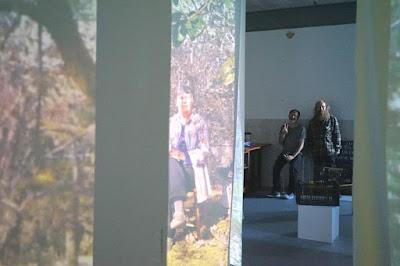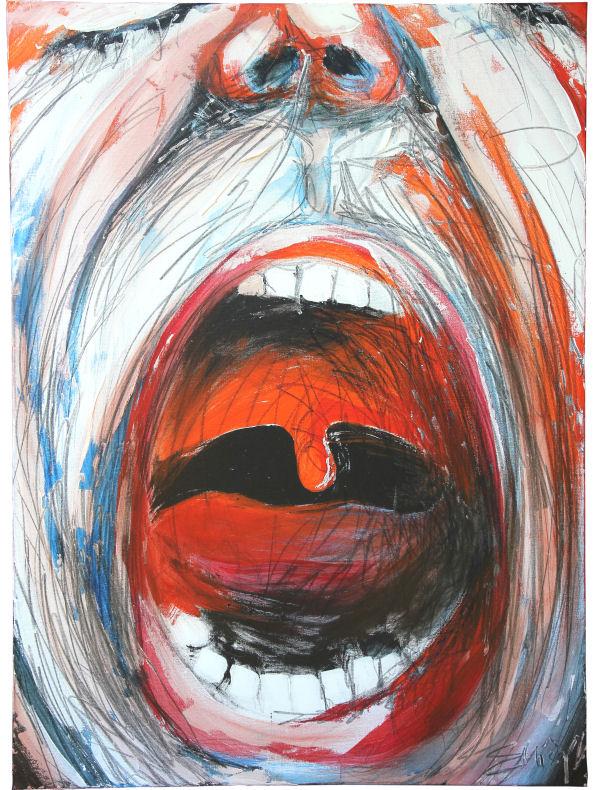
Question: What is your process? What paints do you use and how do you get the layered look?
This question pertained specifically to the work in the change/able show, but the answer relates to everything: Layers!
Both in materials and theory, my work is about layers. Maybe that's just how my mind works. I look at something one way, then turn it around and see the same thing another way. I despise going with the flow, and I'm going to disrupt it. If you tell me how wrong someone is, I'll try to see why they might be right. If everybody hates the rain, I'll organize a mud-splashing adventure. It's my nature to be contrary, and today I'm not going to deny it (but I might some other day, because I'm contrary like that).
The change/able show is all about change: accepting it, and making it happen. So in order to make these multi-canvas pieces, I hang all the canvases up on my studio wall and paint them, usually with a layer of textural acrylic, to begin. I love acrylic because it dries fast, and is easy to create harsh scrappy texture with. When that's dry, I rearrange all the pieces and make another layer, this time of oil. I let it cure, or mostly cure, then rearrange and layer again. Some of the layers are glazes; some are textural, and some involve graphite scribbling, which for me is usually the point that the most emotion goes into the work. I keep making layers until it feels finished, and that can be anywhere from about five to twenty layers. There's a good amount of curing time between many of the layers, so I'm often working on other pieces at the same time.
Basically I've changed things around so much that there is an infinite number of ways to fit the painting together, among which not a single arrangement will be wholly compatible, but all of it is beautiful. Like life. Life changes every time you look at it; emotions, conviction and ideation evolve. We look at things differently as our moods and circumstances change. The reason I work in layers is so that I can get all those many levels of thought and feeling into my work.
Originally published in October, 2019

